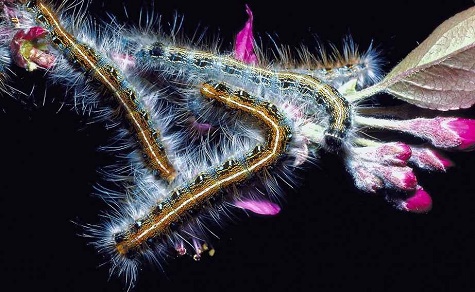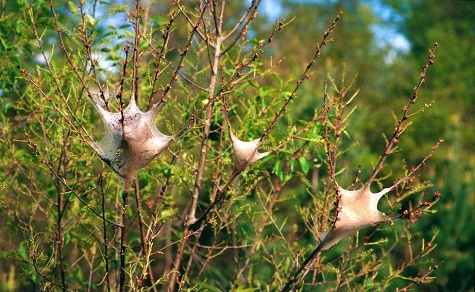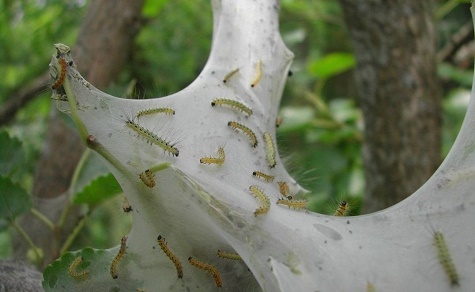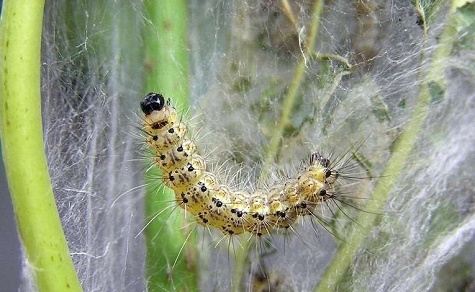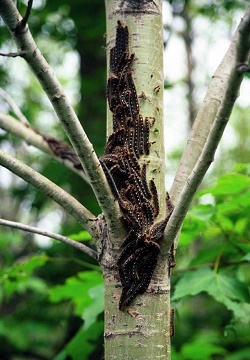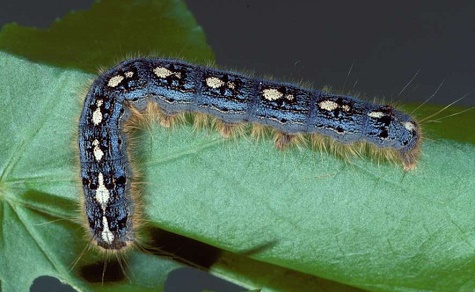Other similar caterpillars
Gypsy Moth Caterpillar
Look Alikes

Several common caterpillars, that show up fairly regularly in Iowa, are often confused as being gypsy moth caterpillars. Here are some of the more common caterpillar defoliators and a brief description of their habits and host preferrences. This information may help you determine if you are looking at a gypsy moth caterpillar.
Click on the pictures to get a larger more detailed view of the insect. To learn how to identify gypsy moth in all of its life stages, please visit our Gypsy Moth Identification page.
